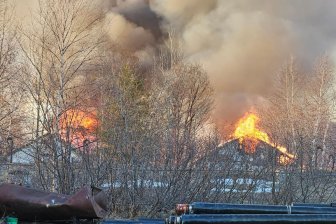The little concrete alley off Montreal’s Desnoyers street sits in the shadow of a massive highway interchange, between two busy streets and a railroad track.

But in the summer, it comes alive with fruit trees, a honeybee hive and flower and vegetable gardens bursting with colour.
It’s one of more than 350 “green alleys” in the city, which ecologists say help reduce heat islands, absorb rainwater and bring green space to Montreal’s underused corners.
“It’s kind of like a little oasis in this part of the city,” says Peter Dimitrakotoulos, one of the citizens who helps manage the Desnoyers alley.
The alleys are the result of citizen initiatives to add greenery, benches, murals and other green infrastructure to the alleys running behind their homes, often with the partnership of local environmental groups and city’s boroughs.
Some 40 new green alleys have been created with city approval each year since 2010, according to the network of environmental committees that administers the program for the boroughs.
READ MORE: Activists work to save downtown Montreal green space from destruction
Dimitrakotoulos says the residents of the Desnoyers alley grow tomatoes, cucumbers, beans, as well as herbs, fruit and other vegetables, which can be an important source of food for the area’s historically lower-income residents.
It also provides a respite from the dust and noise stemming from the construction on the nearby Turcot interchange, which is currently being torn down and replaced.
“If I look out my window I see lots of construction vehicles and rubble and a half-destroyed highway, so the ability to go sit under a tree and have a space where it doesn’t look like that is quite nice,” Dimitrakotoulos says.
Kevin Manaugh, a professor at McGill University’s School of Environment, says green alleys can serve valuable environmental functions, such as absorbing runoff and providing habitat for birds and insects.
“Any time we’re taking previously concrete areas or things that are paved, and replace them with soil and plants you’re potentially impacting the urban heat island effect,” where areas are warmer due to human activities, he says.
READ MORE: How you can help save the bees this spring
Manaugh says back alleys were historically used for deliveries and trash pickups, but now are generally underused and often dirty and trash-filled.
The only significant objection to greening, he says, comes from the car drivers who occasionally lose their access.
Both Manaugh and Dimitrakotoulos say the green alleys’ most important function is to reappropriate community space.
Since it was inaugurated, Dimitrakotoulos notes, the alley behind his home has hosted barbecues, film screenings and workshops on gardening and composting.
READ MORE: Montreal gets ready for spring cleanup
There’s also a knowledge transfer, he says, where experienced gardeners pass on their wisdom to people just starting out.
“I think the larger and long-lasting benefits are that, at least for me, it’s a space that is public and brings people together,” he says.
“I’ve lived in many places, but … this the first time I’ve gotten to know my neighbours.”





Comments